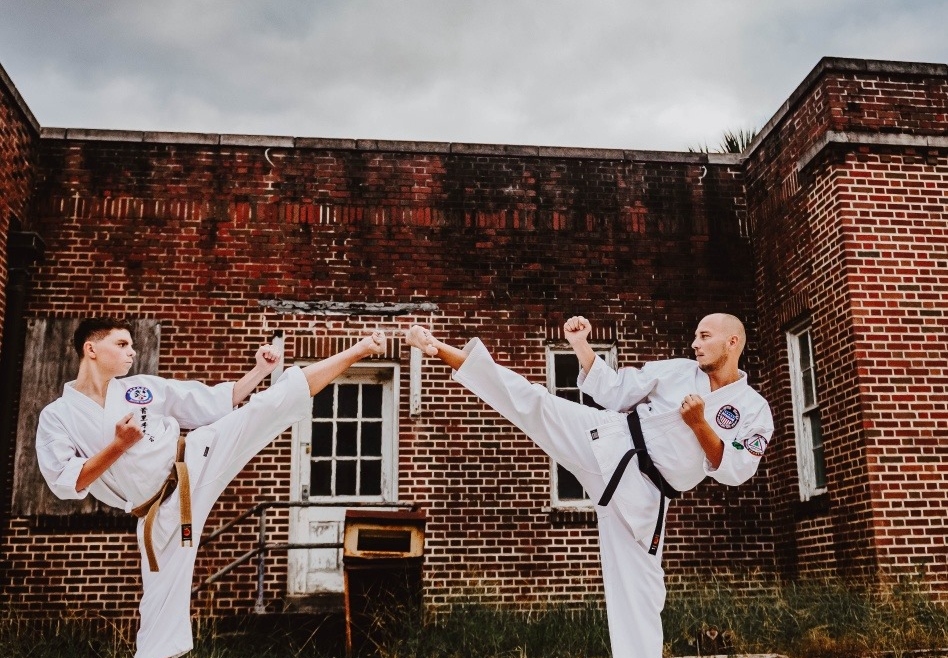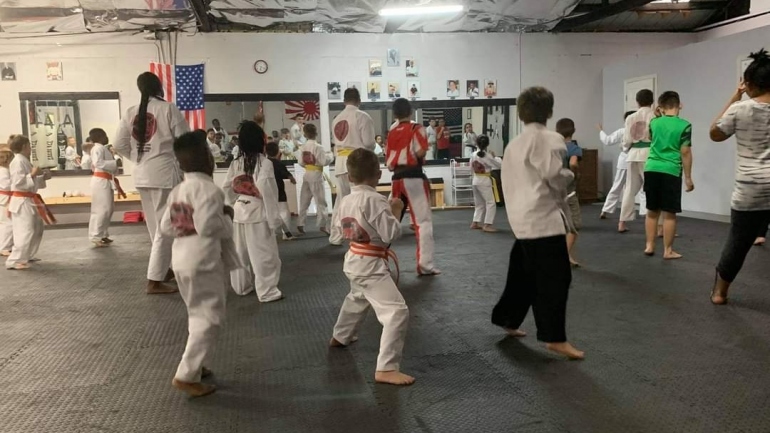I think it’s worthwhile understanding the history of karate and how it came to the US. Karate was created on the island of Okinawa and was first taught in Japan in 1922, when Gichin Funakoshi, the founder of Shotokan, relocated to Tokyo.
The founder of Goju-ryu, Chojun Miyagi, started traveling to Japan to teach his style, which was recognized in Japan in 1929. When Masayoshi “James” Mitose introduced “kenpo” to the United States, it was possibly the first time karate was taught in the United States. In 1936, he brought (for all intents and purposes karate) to Hawaii. In my answer to the previous question, I go through the history of karate and kenpo. What are the differences between kempo and karate?
When American soldiers were stationed in Okinawa after WWII and during the Korean and Vietnam wars, they were exposed to karate in a big way, which sparked a lot of interest in the United States.
What is the difference between Okinawan Karate, Japanese Karate, and American Karate, specifically?
The short response, as many people have said on Quora and elsewhere, is that the differences are in the practitioner, not in the art (or style, or location).
There are, however, a few distinctions that can be made.
Formality is essential. Okinawa is less formal than the rest of Japan. Their etiquette is more casual and relaxed. “Budo starts and ends with respect,” as the Japanese proverb goes. For example, in Japan, bowing is often given special attention, while in most Okinawan dojos, bowing is more casual, and in many cases, there is no bowing at all.
Japanese students are more likely to display deference to teachers and senior students, as well as use more formal forms of communication with them, while Okinawan dojo relationships are mostly (but not always) quite informal. In terms of formality and etiquette, US dojos, on average, fall somewhere in the middle, but given the country’s sheer scale, width, and reach, there is a broad variety. It all boils down to the instructor’s requirements.
Stances. Okinawa karate schools have higher stances than many schools in Japan. This distinction is mostly due to a preference for practicality over physical growth of the lower body. Shotokan, for example, emphasizes lower stances than Goju-ryu or Kyokushin, despite the fact that all three schools can be found in Japan and the United States.
Contact Different schools have different levels of contact. In Okinawa, some schools consider themselves to be “full contact” karate. I have trained with some of the Sensei (teachers) from these schools when they have visited the US, and their training is very interesting and practical.
Mas Oyama, founder of Kyokushin and former student of Yamaguchi Sensei, is often credited with coining the expression “full contact karate.” In Kyokushin they have the concept of the “100 man kumite” – their fighting training is very “hard” when compared to many other schools.
In the US contact was much greater in the 1960s, 1970s, and 1980s, but with the advent of lawsuits and insurance requirements many schools have toned it down. However, it is largely dependent upon the dojo – just as it is in Japan and in Okinawa.




3 Comments
Miki Williams
Loved your website! It will serve as a solid platform for my next project, and I hope your customer support team will help me with customization! Thanks in advance!
Martin Moore
Of course! Please let us know if you need our help!
Jhon Miller
This looks amazing! Your blog is one of the most informative out there about martial arts and karate that I am very interested in. Thanks for everything, you rock!